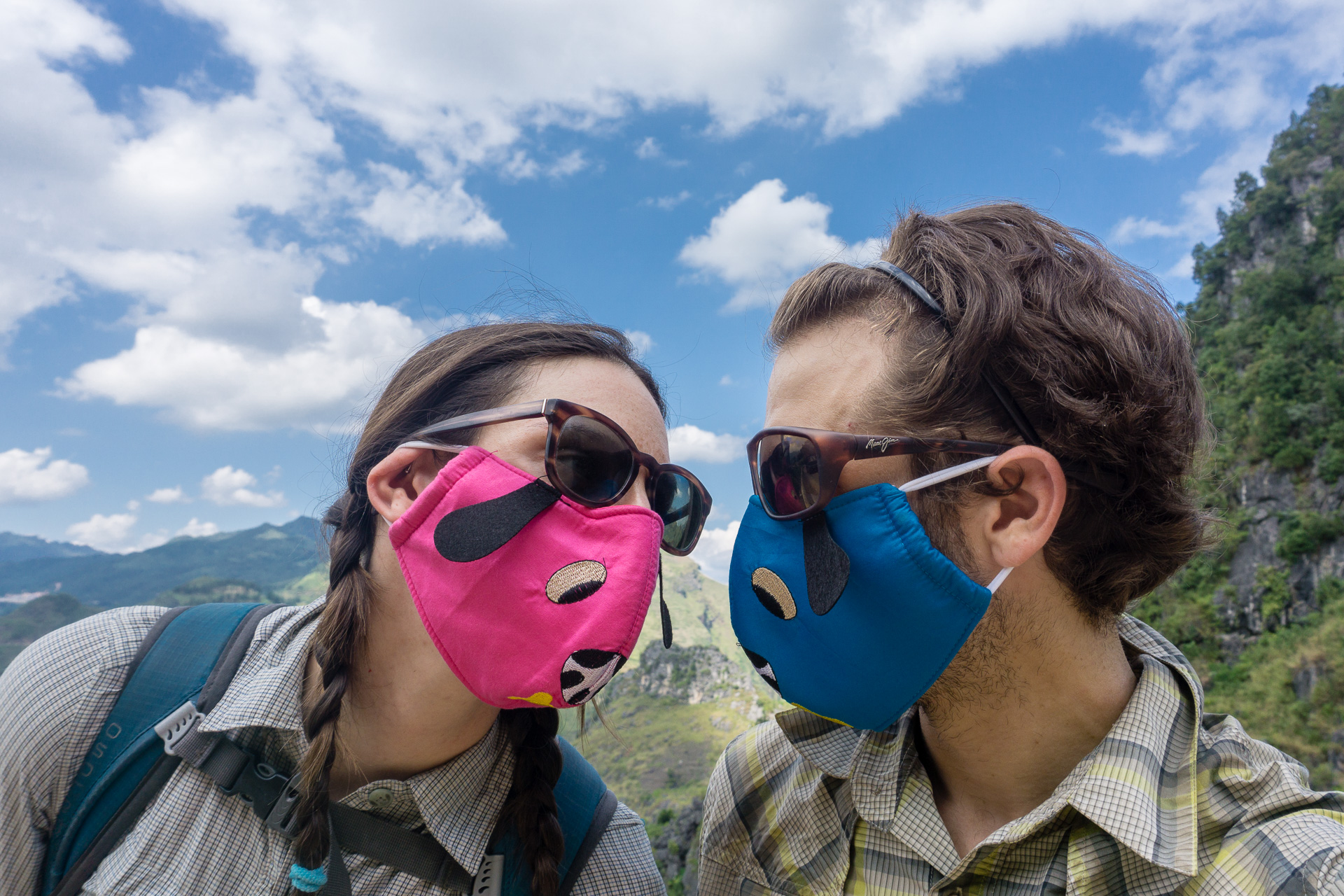3 Days in Ha Giang, Vietnam
/October 2-5, 2016
Ha Giang Provence, Northern Vietnam
Our Location in the Northern Restricted Region of Dong Van, Vietnam
We bought bus tickets in Bac Ha to journey farther north to the rural Ha Giang Provence, with a population estimated to be around 250,000 people. When the bus pulled up all but two seats were taken, yet there were four of us tourists with prepaid tickets waiting to get on. The two remaining seats were fold out chairs in the aisle. The large minivan/bus was crammed four across and there was no longer a visible aisle. We threw a bit of a fit because unlike everyone else who had packed into the van, we had bought silly over-priced tickets from a tourist agency ensuring that we would have seats. We should have known better; how could he possibly guarantee us seats on a public bus that stops for any and all locals along its route?
The man who had taken us to the bus tried to shove us in but we refused until he could magically make the four seats we were promised appear. Low and behold, some people shifted around and all four of us had seats, albeit three of us had shitty fold-up seats for the long and bumpy six hour ride. With our bags strapped to the roof, we took off. We talked with the French and German couple who were also very displeased by the whole bus situation. We ended up staying at the same hotel as the couple and had dinner with them later that night at a local restaurant for a meal of barbecue skewers, grilled veggies, and an order of chicken feet.
We choose a hotel near the bus station as there isn't much to do in the town of Ha Giang. We figured we'd catch an early bus the following morning even farther north to the city of Dong Van, only a few miles from the Chinese border. With little time to spare the next morning we learned we needed a permit to visit this most northern district due to its location and prior territory dispute with China. Our snappy cab driver sensing our urgency to get the permit before catching the bus got us to the immigration office and back to the bus station promptly. $20 later ($10/permit), we were on the bus and headed to Dong Van. (No one ever checked our permits while we were in the district of Dong Van. Go Figure.)
Required Permit for Restricted Area in Northern Vietnam
Required Permit for Restricted Area in Northern Vietnam
City of Dong Van
We bounced around for 6 hours nearly thrown out of our seats every few minutes due to the poor road conditions. After one of the worst bus rides we've had on our trip, we arrived in the isolated district of Dong Van. The district of Dong Van is home to 17 ethnic minorities such as the White Hmong, Lolo, Nung, Giay, and Red Dao to name a few. Dong Van is one of four neighboring districts that are part of the karst plateau recognized by UNESCO as a Geopark. The plateau consists mostly of limestone that reaches jaggedly into the air.
Our Bus from Ha GIang City to Dong Van, Vietnam
Trying to Sleep on the Bus to Dong Van, Vietnam
Dong Van city is quaint and small and centered around a main road, beyond that it's farmland and limestone peaks. We were surprised to see that there were more hotels than we expected though many of them were 'homestays' (just an extra room or two in someones house) and almost all of the restaurants were local joints. A handful of people in the town speak English and that's about it.
After checking into our hotel we were lured to a restaurant a few doors over owned by a man who organizes trekking and homestays in the area. I don't think any western tourists make it into Dong Van without being tracked down by this man. He speaks the best English in town and is quite an entrepreneur with his own hotel, restaurant, tour agency and massage parlor. We sat with him while he showed us his suggested trekking route and the location of a homestay. His price was $75/per person. We paid only $55 for two for trekking and a homestay in Sapa. Needless to say, we figured we would find a way to do the trekking and homestay on our own with the assistance of google maps and some informative travel blogs.
Before sunset we ventured out on a short hike from the main street. We climbed for 45 minutes up a limestone peak to an old fortress left over from the French. We could see Dong Van city in it’s entirety from our vantage point.
Hike to Dong Van Fortress in Northern Vietnam
Hike to Dong Van Fortress in Northern Vietnam
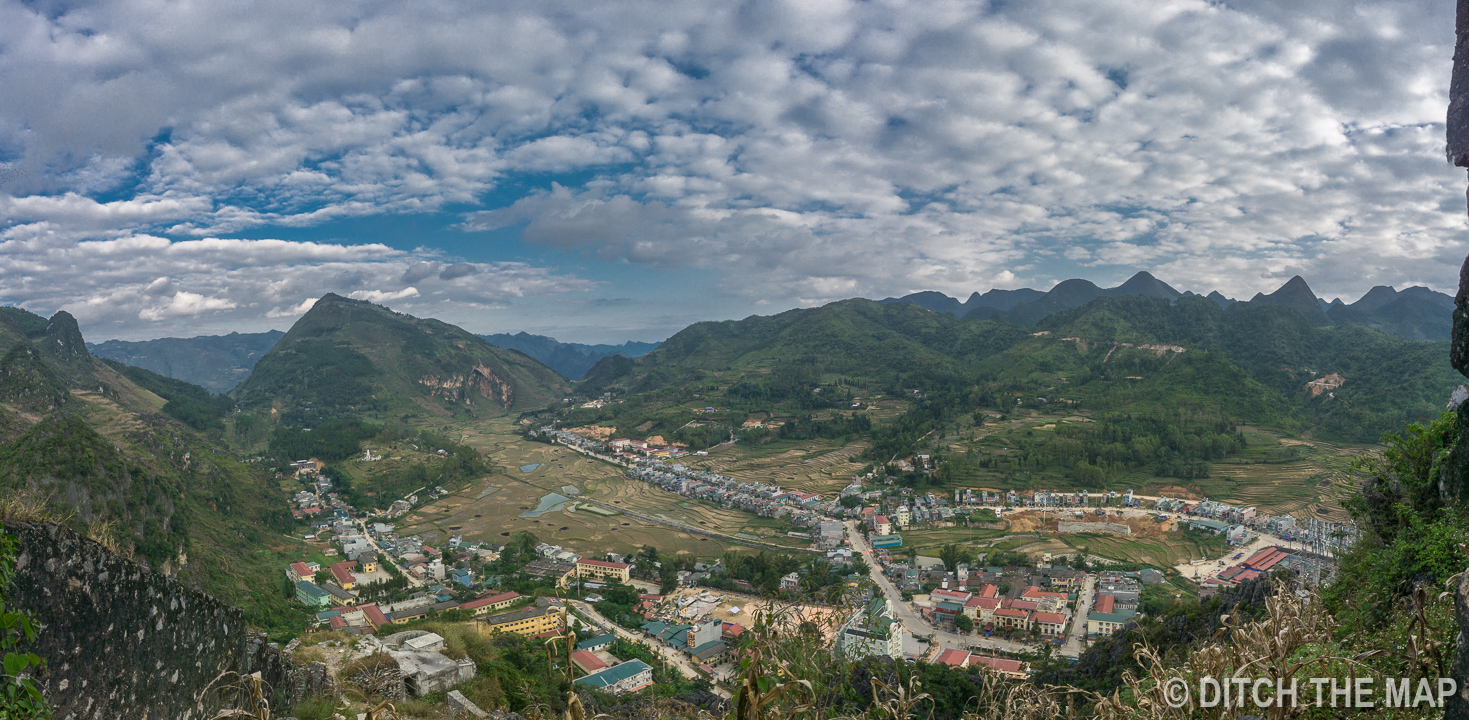
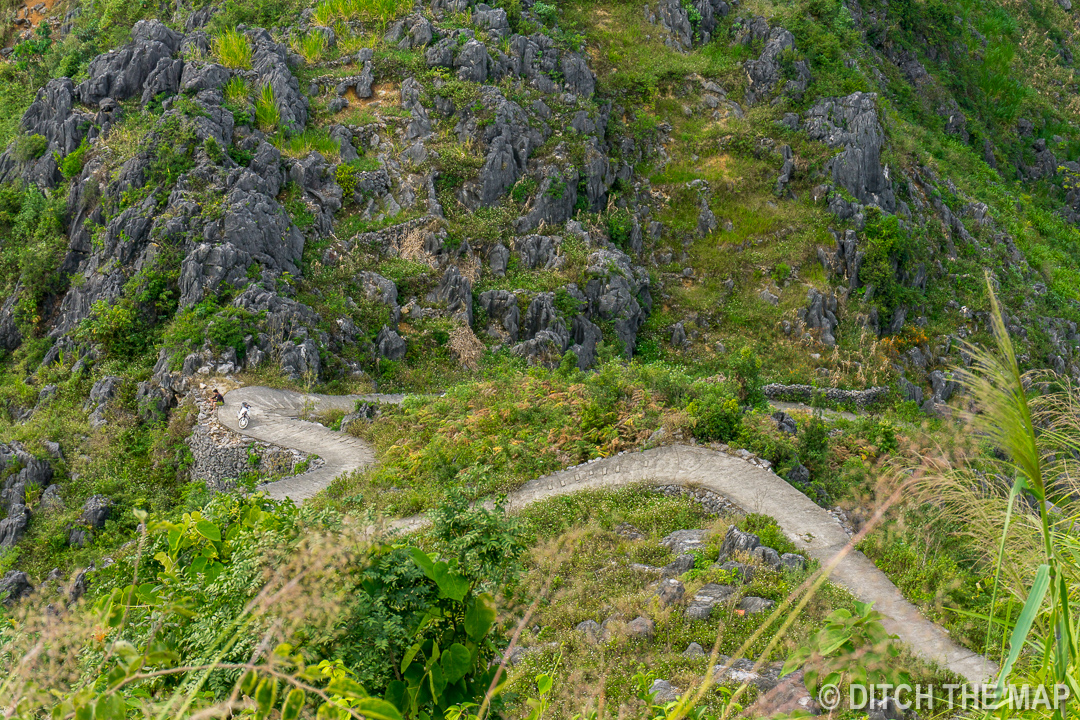
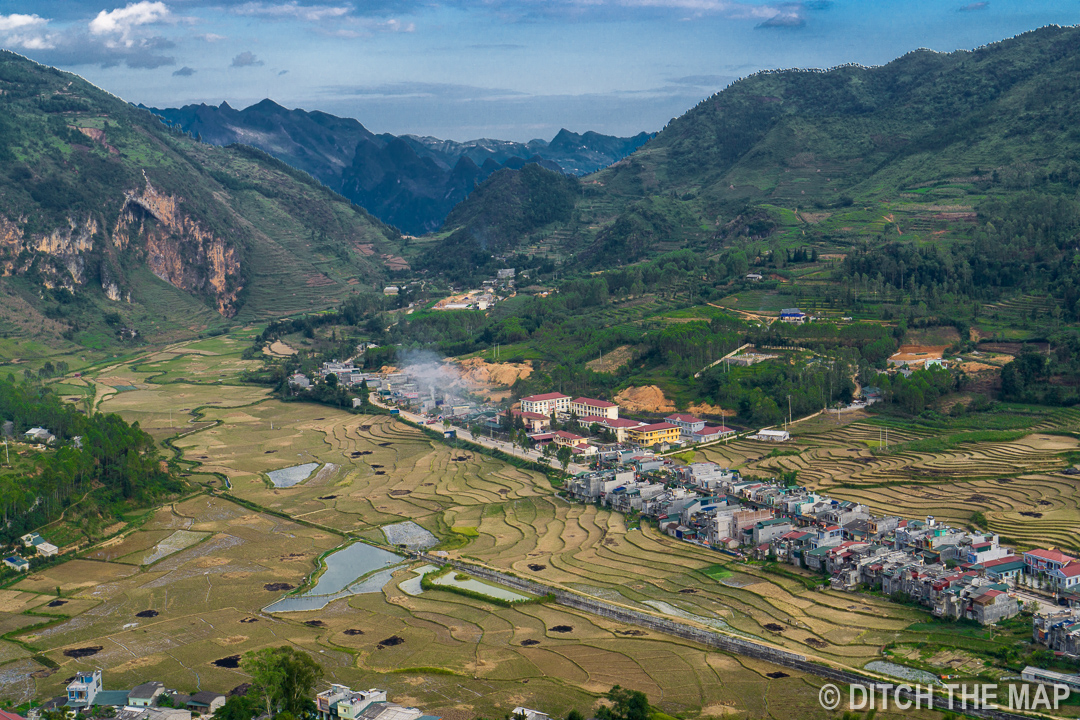
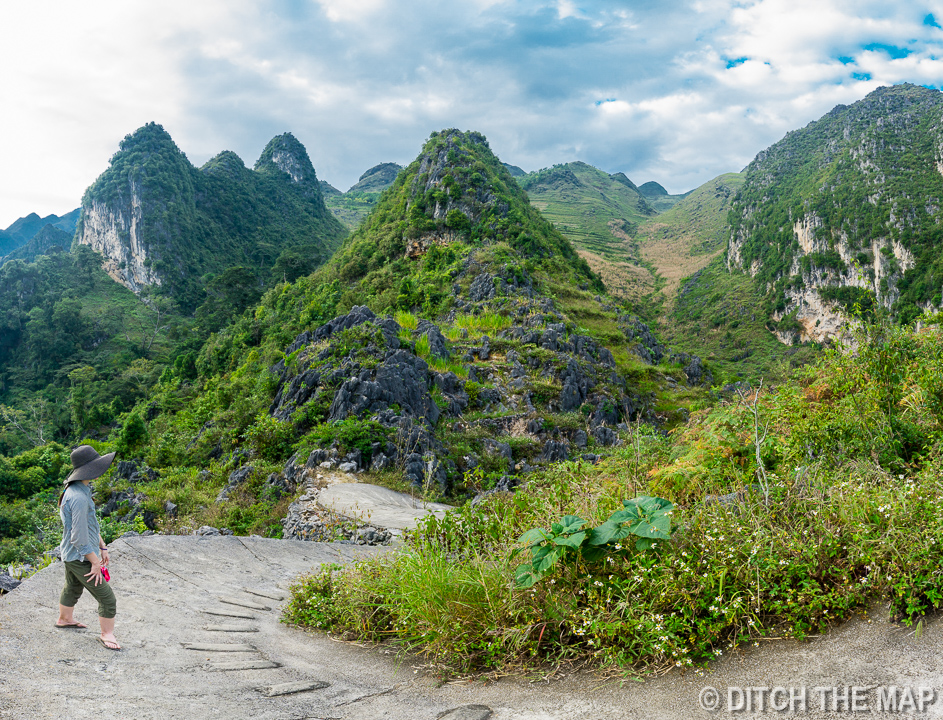
A Night Out in Dong Van; Friendly Locals and Corn Wine
Tired from the long day of travel, our plan was to grab some food to take back our room for dinner. But, while we were waiting at the restaurant for our take-away meal we were invited to sit with a group of about 10 local guys eating dinner. Though they did not speak any English they were incredibly friendly and almost instantly presented us with shots of corn liquor (the locally fermented alcoholic beverage of choice). What we anticipated as one drink with the guys turned into 2+ hours of eating, drinking and attempting to communicate via google translate. The guys continued to cheers with us and shake our hands until we had had about 8-10 shots each; they were pretty relentless. Fortunately the liquor was not too strong. The locals here see just enough tourists to still be curious and pleased by their presence, not yet annoyed by them as some are in other higher tourist-trafficked towns.
Our New Friends in Dong Van, Vietnam
Our New Friends in Dong Van, Vietnam
The men graciously shared their meal of hotpot with us as well. At one point during the meal my chopsticks fell and hit the floor. Apparently chopsticks might as well be toxic after making contact with the ground. I was hastily provided with a new pair while being scolded for even attempting to brush off the prior pair to use again. No five second rule here. After the meal concluded we had green tea and a few puffs from their giant bamboo tobacco water pipe (a popular tradition in the area). During the time we spent with the guys we shared a lot of laughs, butchered Vietnamese on our part and butchered English on their part, “okays,” hand gestures and thumbs-ups.
Drinking with new friends in local restaurant in Dong Van, Vietnam (click to view)
Trekking From Dong Van
Our 18km Trekking Trail in Dong Van, Vietnam
The following day we set out on our own trek around Dong Van. We followed a mountain road passing expansive views of mountains covered in terraced rice fields, villages, and the occasional villager. The villages were nothing more than a few homes clustered in a group amid the mountainside. The villagers attended to their lives. Many used rakes to spread out their rice harvest in the sun for faster drying. Children played and giggle at the sight of us foreigners. They don't see too many tourists up in the mountains.
We continued hiking past several villages hoping we would find somewhere to stop for lunch but had no luck. After 18km to the village of Ma Le, we started to lose hope. We got lucky as one of the passing cars on the road slowed for us. (A car on this road is a rarity, it's dominated by motorbikes). Two men offered us a ride to the next town, Lung Cu, an additional 15km away. Aside from the destination, we weren't able to communicate much more. I believe they spoke Vietnamese and possibly Chinese because they had something hanging from the review mirror with Chinese symbols.



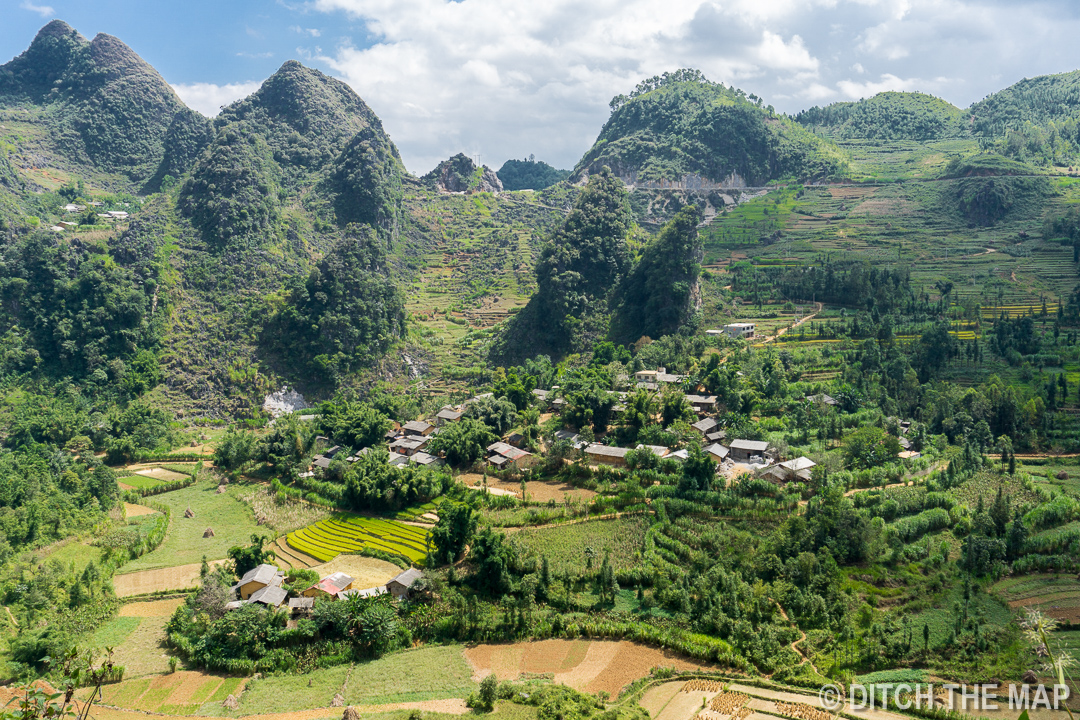
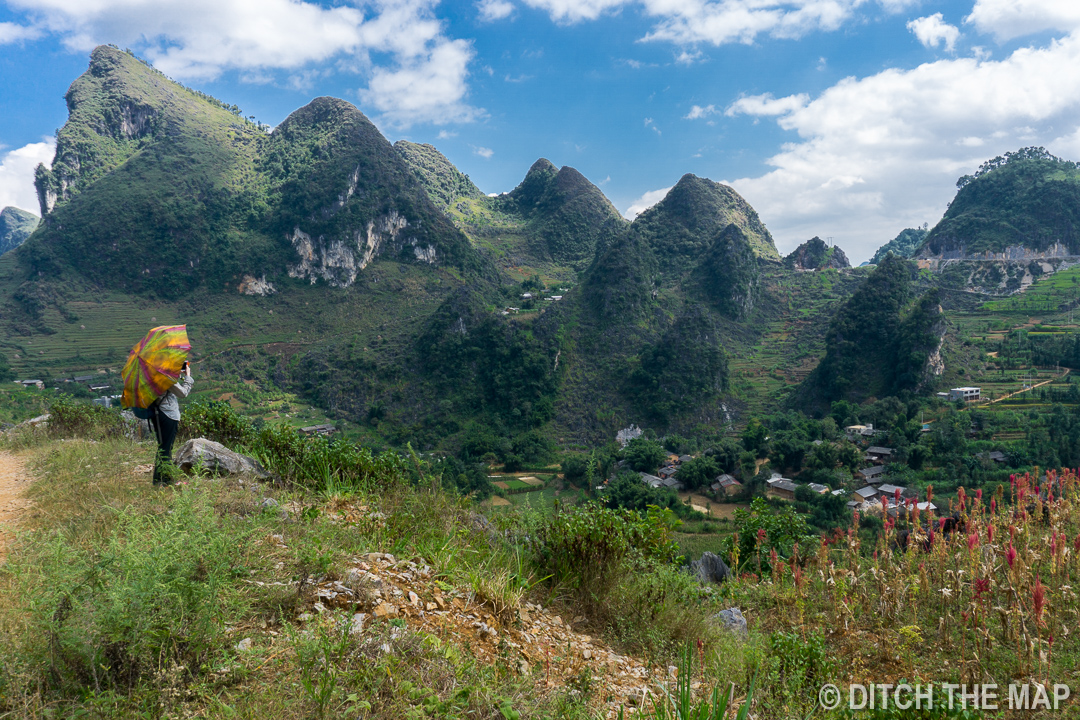
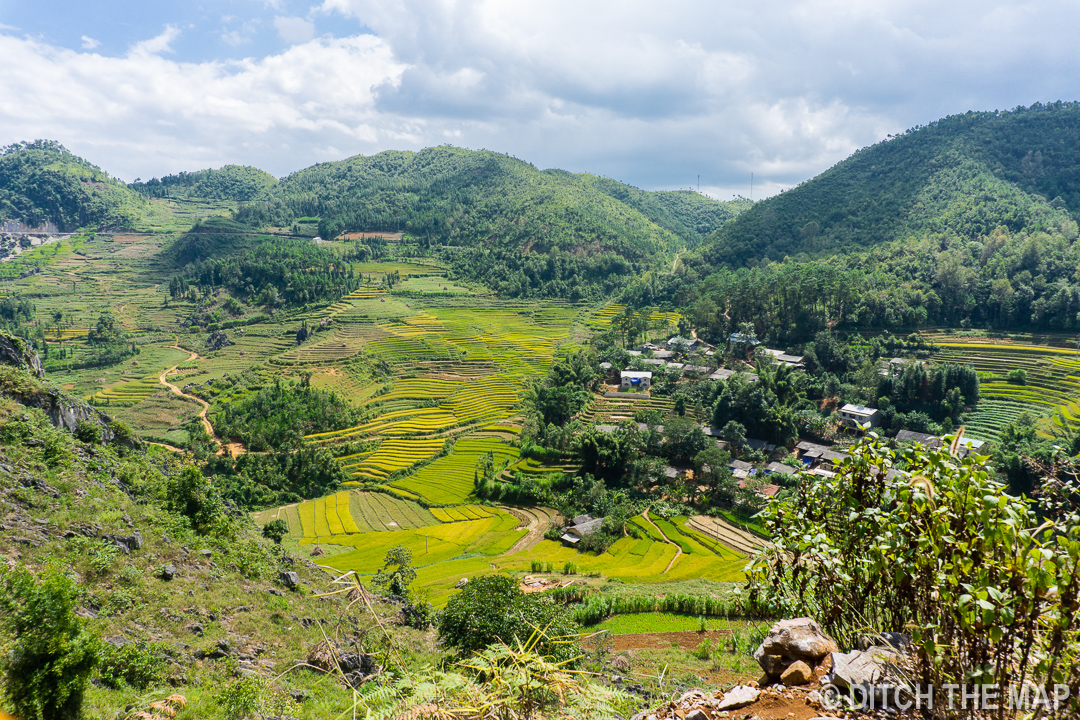
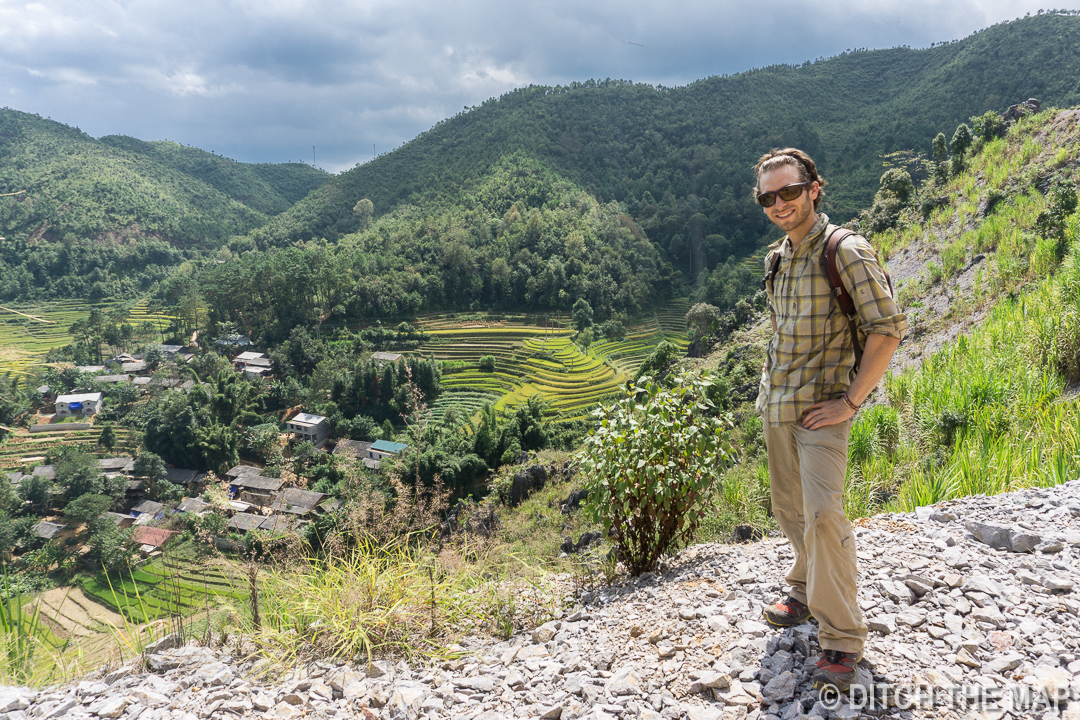
Lung Cu
We were dropped off in Lung Cu. It was just another small town, though it did have a higher tourist presence because of its attraction, the Lung Cu Flagpole. This flag pole, on top of a mountain, marks the extreme North of the country and the border between China and Vietnam. It's a source of pride for domestic travelers. Foreign and domestic travels alike most often reach this destination by following the Ma Pi Leng pass on motorbike. Ma Pi Leng pass is famed as one of the most scenic routes in Asia.
We hunted around for a homestay but it futile. It was not like Sapa where people willing invited us into their homes. These villagers were a bit more aloof. We managed to find someone who spoke English and feeling defeated, asked about a taxi or bus back to Dong Van. She made some calls. A man showed up who then called another friend. For 450,000 dong we could get a ride 25km back to Dong Van (there are no buses or metered taxi cabs, and very, very, few cars. We probably saw all of 5 cars in the whole town). The price was steep but we had no other options. Hitch-hiking, maybe. If we were lucky enough to be passed by a car, or catching a ride on the back of someones motor-scooter. We sucked it up and paid for the car back. We will begrudgingly admit that maybe assistance is needed to book a homestay in these remote rural parts.
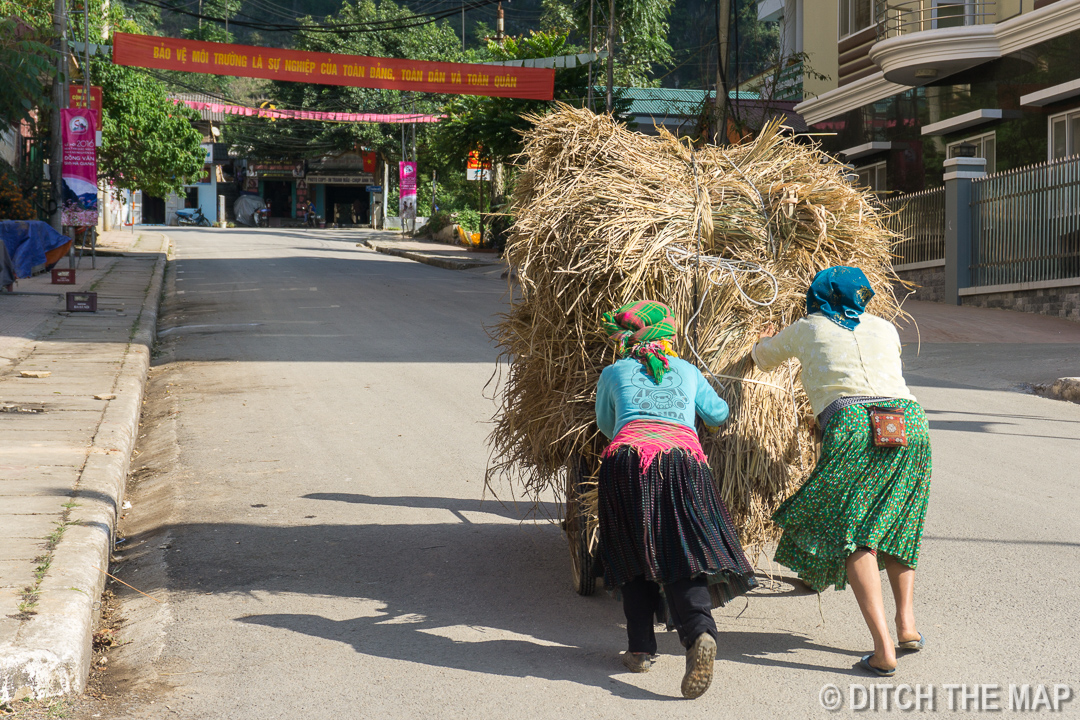

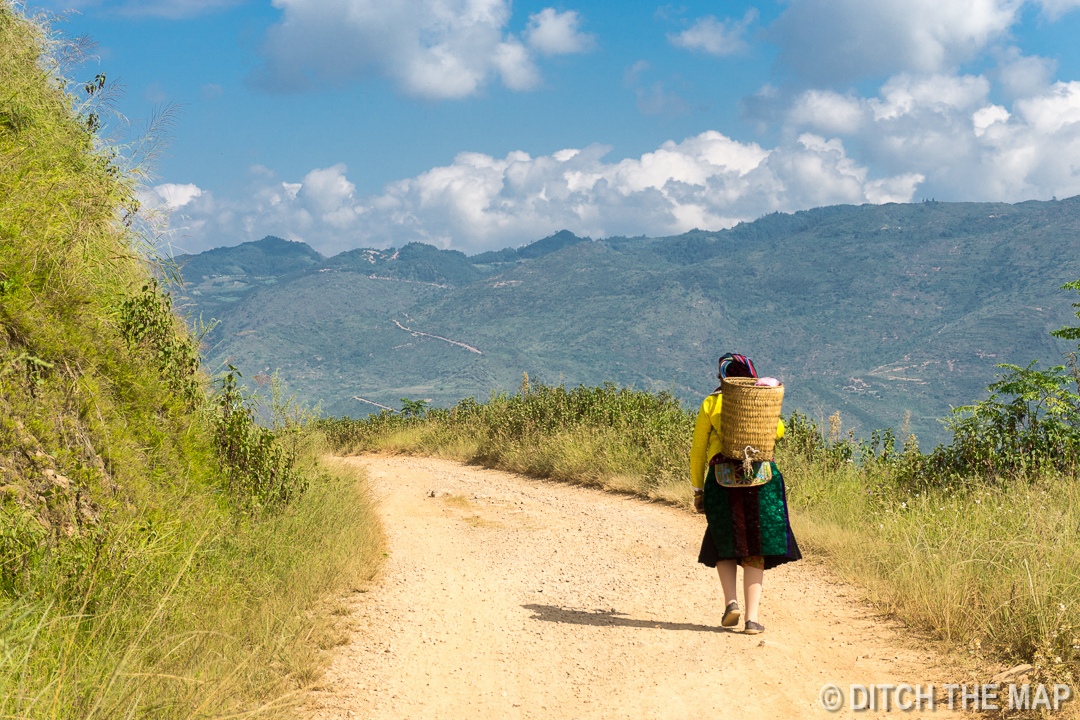
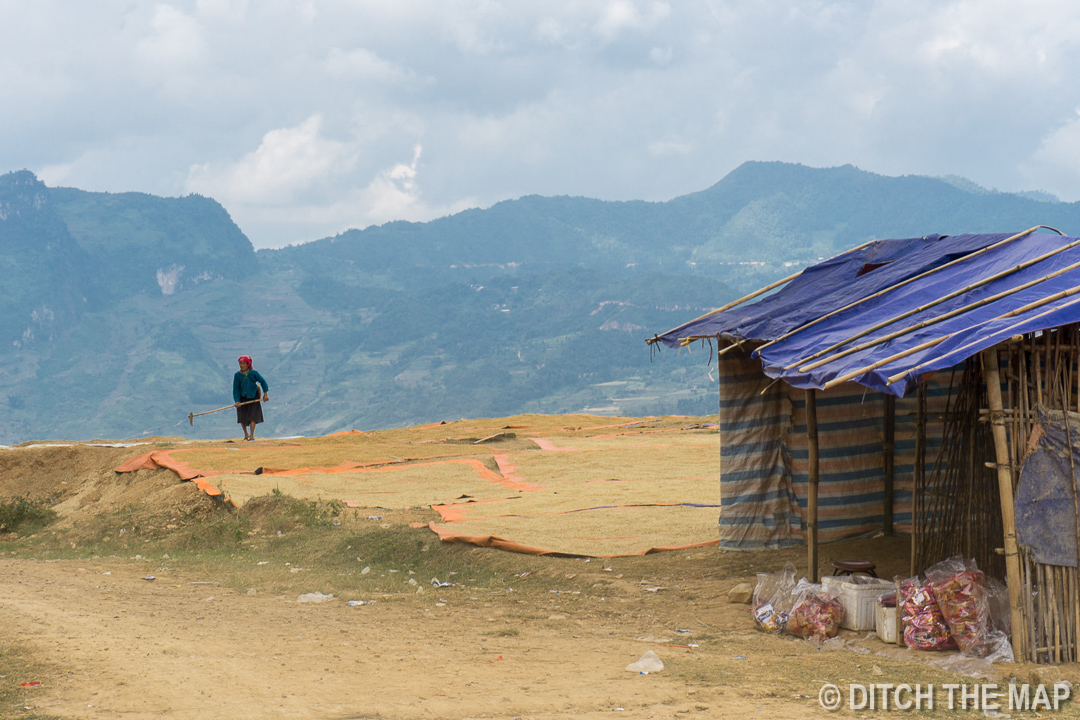
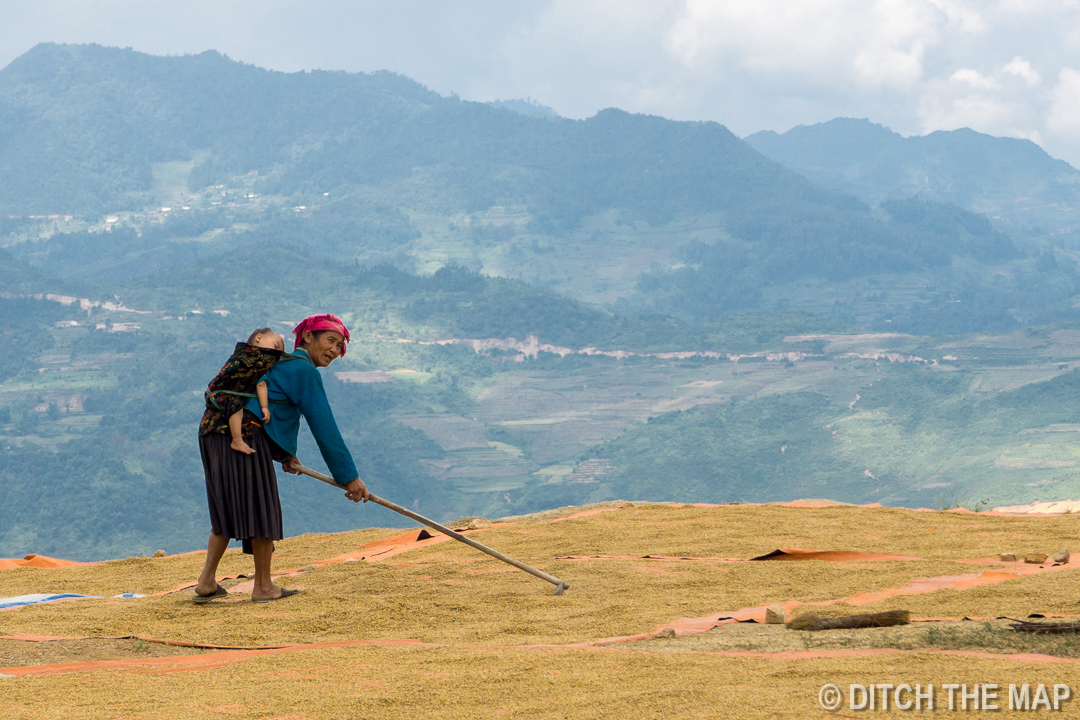
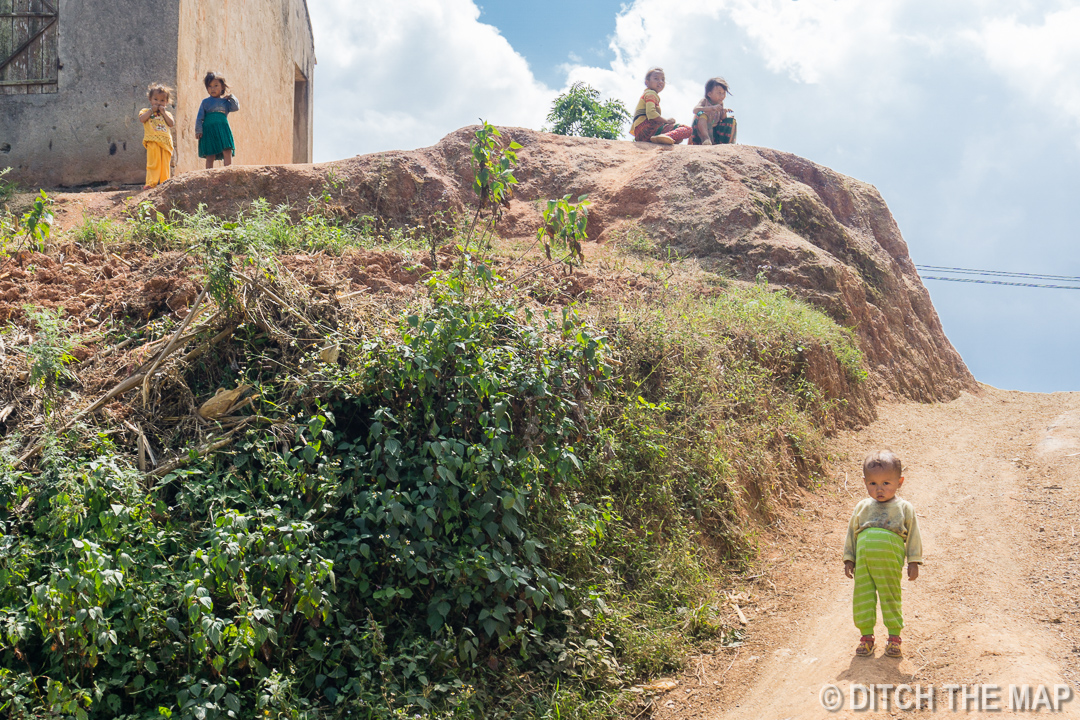
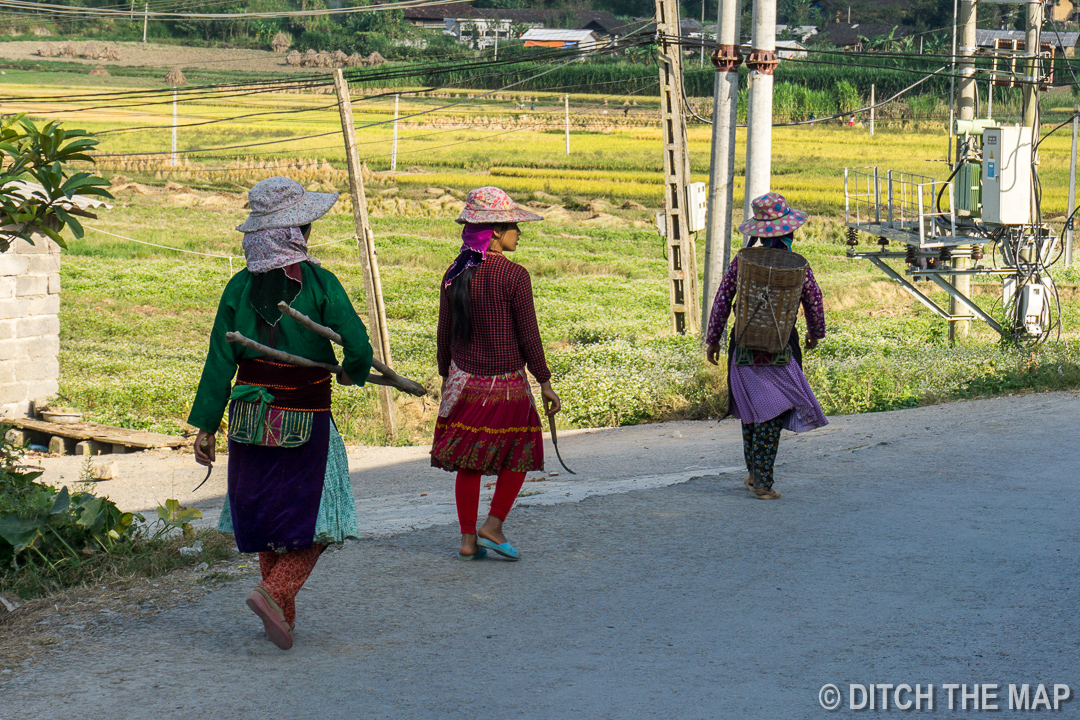
Banh Cuon for Breakfast
On our last day we had banh cuon for breakfast. Banh cuon or steamed rice crepes are found all over Vietnam but Northern Vietnam has it's own variation. Banh cuon is a very light crepe created by steaming rice-flour dough over a fabric covered pot. A thin layer of batter is poured on the fabric and spread evenly across the pot. Then a bamboo stick is used to swipe the cooked floppy dough off of the pot. IT's like art form watching the ladies cook this stuff. It's so fragile yet they always scrape it off in one piece. Some herbs are folded into the crepe and it's sprinkled with fried onions. Our banh cuon had a steamed egg inside of it as well. The banh cuon was served along side a soup with flavorful broth and pork sausage.
Back to Hanoi
We spent a few hours waiting for our minibus; the pick up time kept getting pushed back. When the minibus arrived one man was already on his was to full blow motion sickness. Barf barg in hand, he tried an herbal remedy of sniffing (ginger?) to cure him. A few hours and dozens of switchbacks later he was throwing up out of the window. Others were getting sick as well. Thank goodness we had taken motion sickness medicine. It works wonders.
Sylvie Crammed in Back with the Luggage on our Bus from Dong Van to Ha Giang, Vietnam
Getting Cozy on our Lovely Overnight Bus to Hanoi, Vietnam
We try to get comfortable on our sleeper bus from ha giang provence to hanoi, vietnam
The minibus dropped us off in Ha Giang right where our second bus of the day was picking us up. The sleeper bus was waiting for us. We climbed on and were given a plastic bag by the driver for our shoes. Shoes are never permitted inside, this rule applies on the bus as well in homes. Hotel rooms even provide you with a pair of "indoor-only" sandals so that your 'dirty' shoes that have made contact with the outside don't touch the clean floors.
We slept fairly well and arrived in Hanoi at 5am the next morning. We spend one night in Hanoi, then we have a flight to Myanmar with a short layover in Bangkok. We will spend the next three weeks in Myanmar.
Our Route through Vietnam










